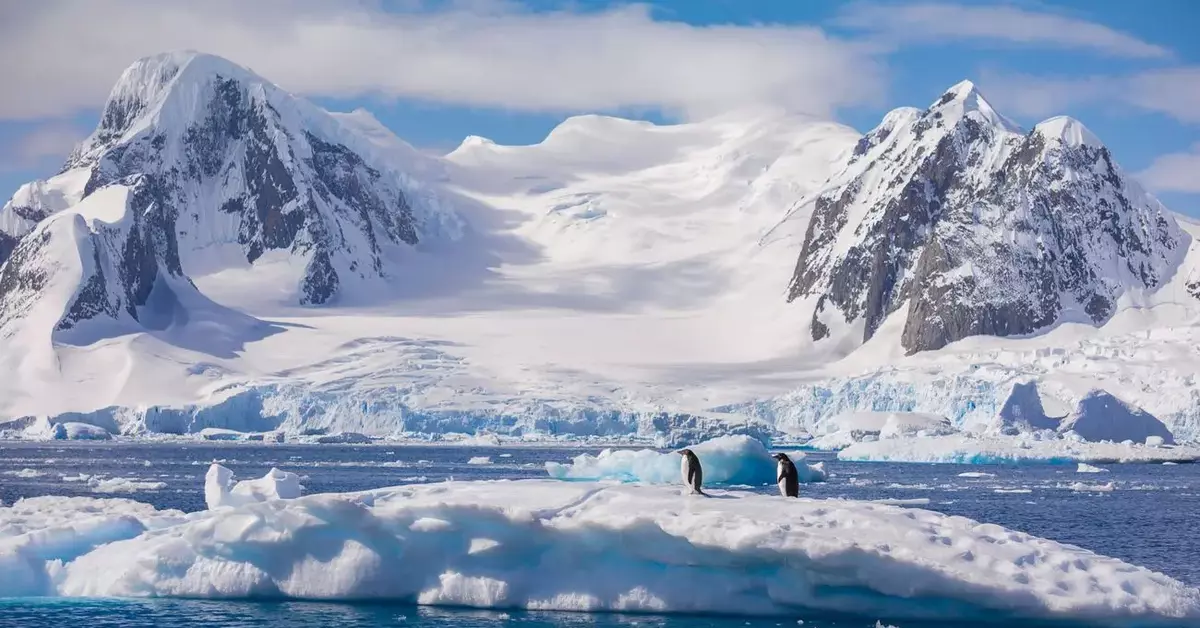Antarctica, the frigid continent at the Earth’s southernmost point, has likely reached its lowest annual sea ice extent ever documented, sparking concerns among scientists who suspect that global warming is propelling the region into a new era of diminishing ice. This trend carries substantial implications for global climate patterns and sea levels.

A Historic Low
Traditionally, Antarctica’s sea ice reaches its maximum extent in September each year. The average extent from 1981 to 2010 was 18.71 million square kilometers. However, initial findings from the US National Snow and Ice Data Center (NSIDC) indicate that, this year, on September 10th, the sea ice only reached a maximum of 16.96 million square kilometers and has been steadily decreasing since then.
This year’s maximum sea ice extent falls a substantial 1.75 million square kilometers below the long-term average and nearly one million square kilometers less than the previous record low set in 1986. Dr. Will Hobbs, a sea ice scientist at the University of Tasmania, has noted a remarkably slow growth rate of Antarctica’s sea ice since April, signaling a significant shift.
The loss of sea ice in the Ross Sea area was attributed to winds pushing the ice against the continent, allowing warmer air to penetrate. Nevertheless, the reasons behind the ice loss in other parts of Antarctica remain unexplained.
A Sudden Transformation
Antarctica’s sea ice undergoes an annual cycle, with its lowest extent typically occurring in February and its highest in September. This pattern remained relatively stable until it broke its previous record low in 2016. Subsequently, additional record lows have been set, including the February minimum this year.
In February, during the height of the austral summer, Antarctica’s sea ice reached a minimum extent of 1.79 million square kilometers, also a record low, according to the NSIDC. Surprisingly, despite the onset of winter, the ice pack’s growth rate remained sluggish.
ALSO READ: Mind-Blowing Revelation: Earth’s Hidden Ocean Holds More Water Than the Seas!
Antarctica’s sea ice had maintained relative stability and even slightly expanded for several decades. However, since August 2016, the NSIDC has observed a sharp decline in sea ice extent throughout most months of the year.
Simultaneously, in the Arctic, where summer was ending, the sea ice reached a minimum extent of 4.23 million square kilometers, marking the sixth-lowest minimum in 45 years.
Is It Climate Change?
Scientists are currently investigating the causes behind this dramatic sea ice decline, with natural variability and global warming likely playing pivotal roles.
While some scientists remain cautious about attributing these records solely to global warming, the sea ice loss aligns with climate change predictions. The NSIDC suggests that the losses since 2016 are most likely linked to the warming of the upper ocean layer.
This could indicate the onset of a long-term decline in Antarctic sea ice, driven by the global warming of oceans. The NSIDC also raises the possibility that waves impacting the ice sheet might increase “accumulation near the coast,” potentially offsetting some of the threats of rising sea levels.
Chilling Consequences
The consequences of diminishing sea ice are profound. Sea ice serves as a barrier, preventing land-based ice from entering the ocean and contributing to rising sea levels.
Additionally, sea ice reflects sunlight back into space. With less sea ice, more of the ocean surface is exposed to the sun’s energy, further warming the Southern Ocean and exacerbating ice loss.
Dr. Ariaan Purich, a climate scientist specializing in Antarctica, expresses deep concern about the future, stating, “I’m worried that it looks like low sea ice is the future—and it’s happening now.”
Walt Meier, a scientist at the NSIDC, characterizes it as a “record-breaking low in Antarctic sea ice,” and the consistently low growth around the entire continent indicates that ice loss is not region-specific but rather a global concern.









